Menu
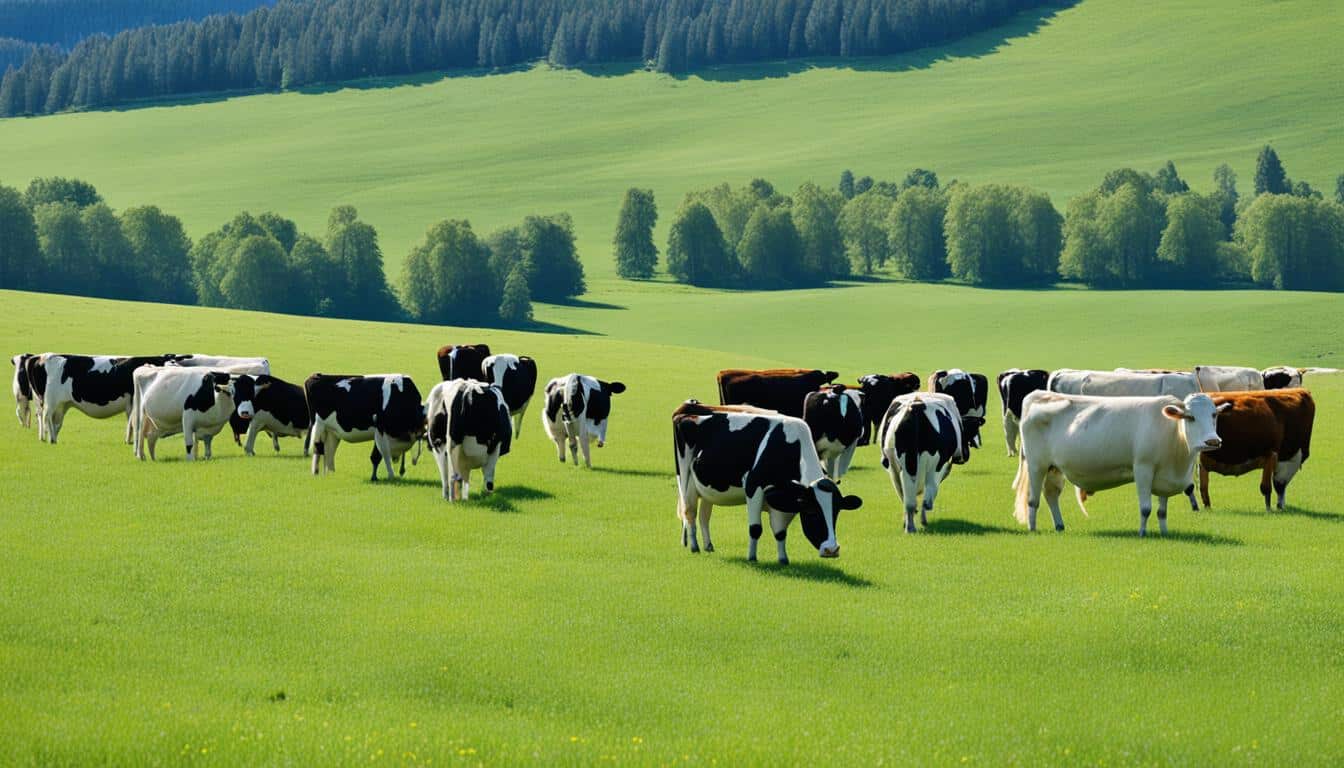
In Sweden, just over 20 percent of the land is organic. But the government wants to reach 30 percent by 2030. This goal shows a big move towards farming in a way that is good for the Earth. At Högalid farm in Skåne, Mikael and Anna Palm have been doing organic farming since 2016. Their work, with 550 cows, shows the good and hard things about organic farming.
Organic farming in Sweden is getting more popular. This is because people want it and the government has big aims. By 2030, they want 60 percent of the food in public places to be organic. Farmers like the Palms are leading this. They use Yara’s organic fertilizers to make their soil and crops better. This way of farming helps the environment and uses resources in a smart way.
The Palms and many other farmers are making big changes to help the planet. They use cow manure to help crops grow and don’t use machines a lot. With help and new knowledge, they are making their farms more earth-friendly. Organic farming is becoming very important in Sweden thanks to such changes and learning from others around the world.
Swedish organic farms have become a key part of the country’s farming story. They show a move towards using methods that are good for the environment. People are buying more organic food because they want to eat healthily and help the planet.
Starting in 1985, Sweden began to focus more on organic farming with the foundation of KRAV. Over 20 years, the number of organic farmers grew from a few hundred to 19,000. They looked after 510,000 hectares of land by 2005. That’s about 19% of all farmland in Sweden.
The goal is to have 20% of farmland organic. But the number of organic farms went down by 2022, even though they managed more land this way.
The demand for organic products is getting stronger, which affects farming a lot. This interest is encouraging farmers, like the Palm family at Högalid farm, to farm organically. People want food produced in a way that cares for both their health and the earth.
Support from the government is vital for organic farming to grow. Sweden has set big goals for 2030, wanting 30% of farms to be organic. The aim is for 60% of food in public places to also be organic.
The government encourages farms to use eco-friendly practices that are good for nature. This help shows Sweden’s strong commitment to farming in a way that protects our planet.
Organic livestock farming in Sweden has many benefits. It follows ethical rules for caring for animals. It also improves soil health and helps the environment. This way of farming meets what people want from their food. It also helps the world around us.
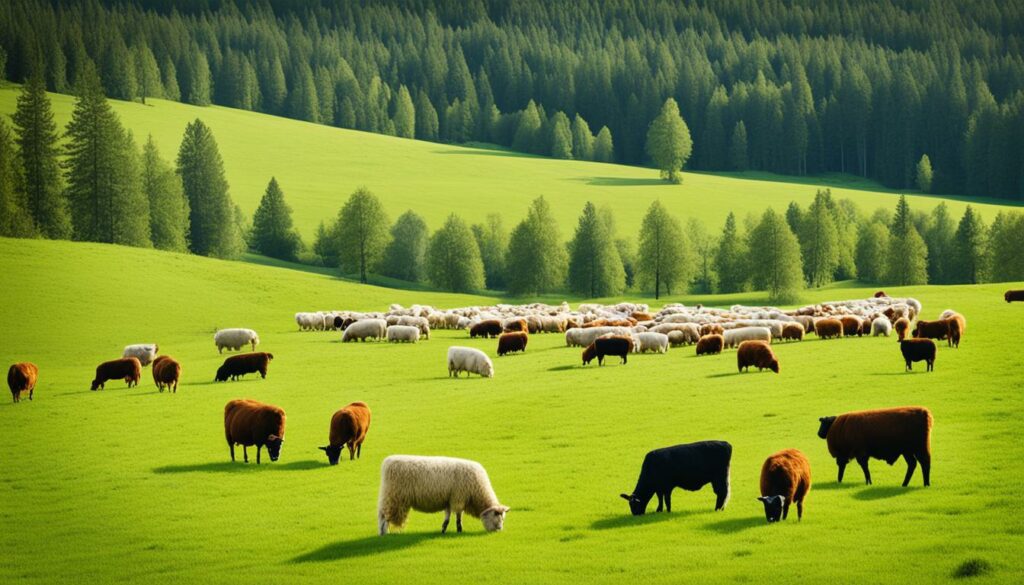
Organic farming cares about how animals are treated. Places like Högalid in Skåne are kind to their animals. They give them space, let them outside, and feed them a natural diet. This helps the animals be healthy and happy.
Looking after the soil is a big advantage of organic farming. By planting different crops and using natural materials, the soil gets stronger. This keeps the land good for farming in the future. It also means the crops grow better. Organic farming is used on a lot of land worldwide, showing its importance.
Organic farms help the environment a lot. They do not add as much to pollution as other farms do. They use less of the Earth’s resources. This helps keep nature in balance. The good things they do help everyone live in a healthier world.
Many facts show these farming ways are good for the whole planet. More and more places in Europe and Asia are choosing organic farming. Research shows that this type of farming is better for many reasons. It’s good for nature, animals, and us.
In Sweden, organic farming is a model of doing things the right way. It looks after animals well, keeps the soil healthy, and protects the Earth. This is key for a strong and long-lasting farm sector.
Organic livestock farming faces many hurdles, despite its positives. It’s costly at first and for ongoing maintenance, more than conventional methods. This makes it hard for farmers to initially shift to organic.
The cost implications of organic farming are not light. At the start, purchasing certified feeds is expensive. Maintaining certifications costs more than conventional agriculture. Also, organic ways require more human work, adding to operational costs.
Using manual methods to control weeds and organic fertilisers costs more. These high costs can scare off new and current farmers from going organic.
Getting into the market is tough for organic livestock producers. To really make it, they need top-notch products. They must compete well with conventional products. But the organic market is still small compared to the bigger, conventional one.
This means organic farmers need strong marketing. They must make sure the public knows why organic is better. By doing this, they can beat their rivals.
Running an organic farm well means careful planning. Keeping the right balance of nutrients and using organics wisely is key. Also, preventing animal waste from harming the environment is vital.
Finding local feed and bedding sources can also be tough. But, doing this while sticking to organic rules takes good planning and being clever.
In Sweden, sustainable farming is vital for greener meat and keeping the soil healthy. Farmers carefully manage manure, use different parts of the land for grazing, and let nature play its part. Högalid Farm shows how well these methods can work on a 400-hectare area.
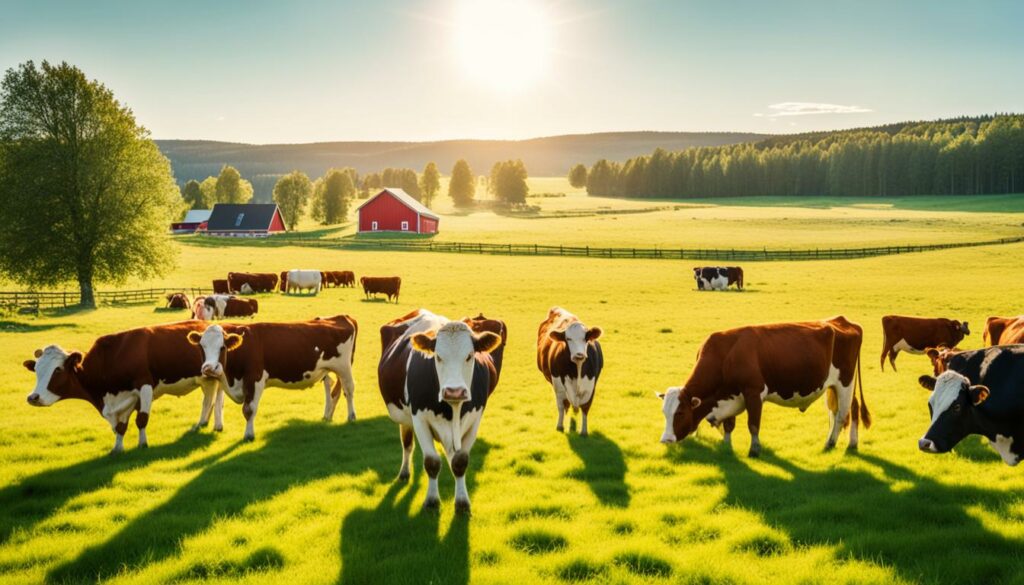
At Högalid Farm, working with others is key. They rotate grass to improve the soil, fight weeds, and add natural nutrients back. They also use Yara’s eco-friendly fertilisers, which close the loop by recycling nutrients. Yara also offers precision farming tools to help farmers meet their goals in a sustainable way.
Organic farming at Högalid is a big part of their approach. They change the crops grown and add organic matter to the soil. This means using machines less, which is better for the soil. It leads to the soil holding more water, better drainage, and stronger plant roots. They also carefully choose when to use manure and fertilisers to keep the nutrients in the soil.
Sweden’s dairy farms are quite efficient, with the cows in the “milk belt” doing especially well. They produce a lot of milk with less land, thanks to sustainable methods. This not only means more milk but also helps protect nature for the future. It matches with Sweden’s aim of looking after the environment and making farming last.
Sweden wants 30% of its farmland to be organic by 2030. To do this, it’s important to keep improving sustainable farming approaches. These ways of producing meat and keeping the land healthy are what will help farming and nature thrive together in the long run.
Sweden is at the forefront of ethical livestock farming. It focuses on the humane care of animals using natural animal welfare standards. These principles guide various practices that aim to protect the well-being and dignity of farm animals.
An essential part of ethical farming is to follow natural animal welfare standards. This means giving livestock space to move with access to the outdoors and natural light. They also get the right food. The EU has rules that use proper breeds and feeding methods to keep animals healthy. This shows a deep commitment to treating animals well.
These methods also meet what consumers want. A survey in Denmark found that most people choose organic for health, the planet, and animal well-being. This demand leads to the production of organic meat and dairy. In the Nordic countries, organic farming was important, covering 1-10% of farmable land by 1999.
The USA and the EU have their ways of ensuring animal health without using antibiotics. In the USA, if an animal gets antibiotics, it can’t be sold as organic again. The EU gives a 3-6 month break for animals that need a lot of medical care each year.
European veterinary schools are now teaching students more about animal welfare and ethics. This change is needed in how we view and manage livestock properly. The Swedish Farmers’ Federation promotes clear rules to maintain high ethical standards in raising animals.
In the end, Sweden’s focus on organic farming, supported by rules and consumer choice, is a model of ethical livestock care. By prioritising natural animal welfare standards and good treatment of animals, Sweden shows the world how to farm organically.
Crop rotation is key in organic livestock farming. It involves growing different crops in each field each year. This helps keep the soil healthy, fights weeds, and makes better use of nutrients.
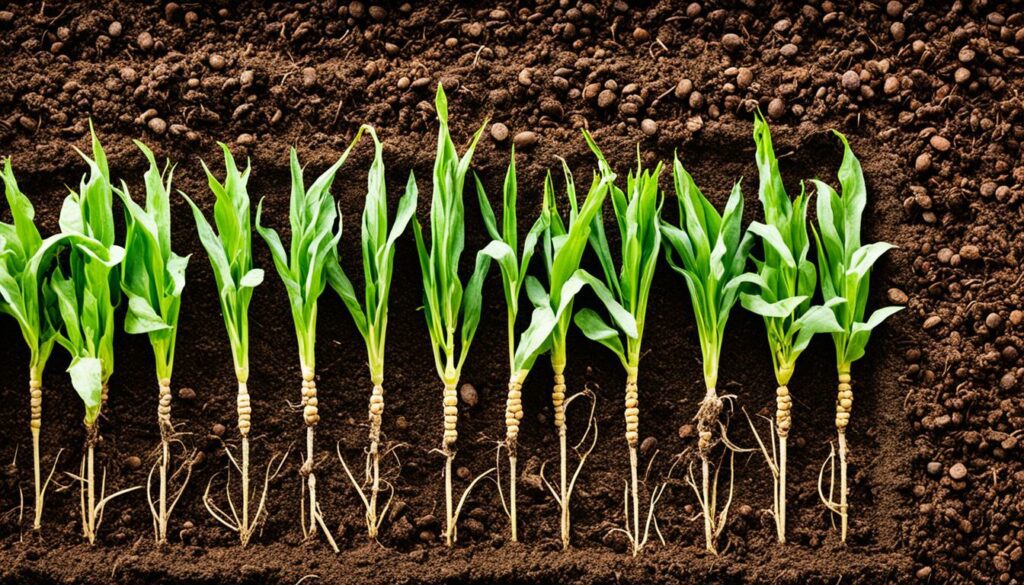
Livestock are essential for healthy soil, says Robyn Neeson from Organic Farming. They help mix nutrients into the soil. This improves the soil’s life and fertility. By using crop rotation and adding organic materials, farms don’t need as many chemical fertilisers.
Crop rotation is great at controlling weeds. Changing crops disrupts weed growth cycles. This makes it harder for weeds to take over. It means less need for herbicides. Farms like Högalid Farm use smart rotations to deal with different weed challenges.
Crop rotation also takes care of nutrient needs naturally. The rule is that all food for organic animals must be grown organically. This is where healthy soil comes in. Soils keep rich in nutrients through good crop rotation. This is very important for sustainable farming.
Encouraging natural predators for pest management in organic farming is crucial. For instance, 1,000 ibis can consume around 250,000 pests in a day, contributing to nutrient cycling and disease control.
Crop rotation is a big part of organic farming. It keeps soil healthy and nutrients balanced. This leads to better crops and stronger farms overall.
Organic livestock farming is key in soil conservation; it protects soil quality and structure. It stops soil from eroding and becoming less fertile. This is very important for the future of farming. It has big effects on the environment and farming. Plus, it keeps the land ready for growing crops well.
In some parts of southern Europe, livestock farming made 396.46 M € in 2010. This was 36.10% of farming’s income in the area. It shows how important livestock is to the economy. So, making sure it’s sustainable is very crucial.
Around the world, farming animals takes up a lot of land and uses most of the farming space. But, it’s also a big source of greenhouse gases. In fact, it makes up 14.5% of all human-caused greenhouse gases. This is more than what our cars and planes produce. So, it’s clear we need farming methods that are better for our planet.
When animals are raised on pasture in an organic way, it’s good for the soil. They help soil become richer and hold more water. This makes it better for growing crops. Organic farming has many benefits. It not only offers great food but also helps protect the environment and supports rural areas.
| Livestock Use | Percentage |
|---|---|
| Land Utilised | 80% of global agricultural land |
| Employment of Agricultural Land | 30% of ice-free land |
| Greenhouse Gas Emissions | 14.5% of human-induced GHGs |
Choosing organic beef and lamb over normal pork is better for the earth. But, it costs more to make and creates more pollution. Even with these issues, going organic in farming is really needed today. It does a lot of good for everyone and for the environment.
Organic livestock farming in Sweden is growing fast. It’s a move towards a more sustainable and responsible agriculture. More people are choosing organic products. This reflects Sweden’s interest in food safety, quality, and farm ethics.
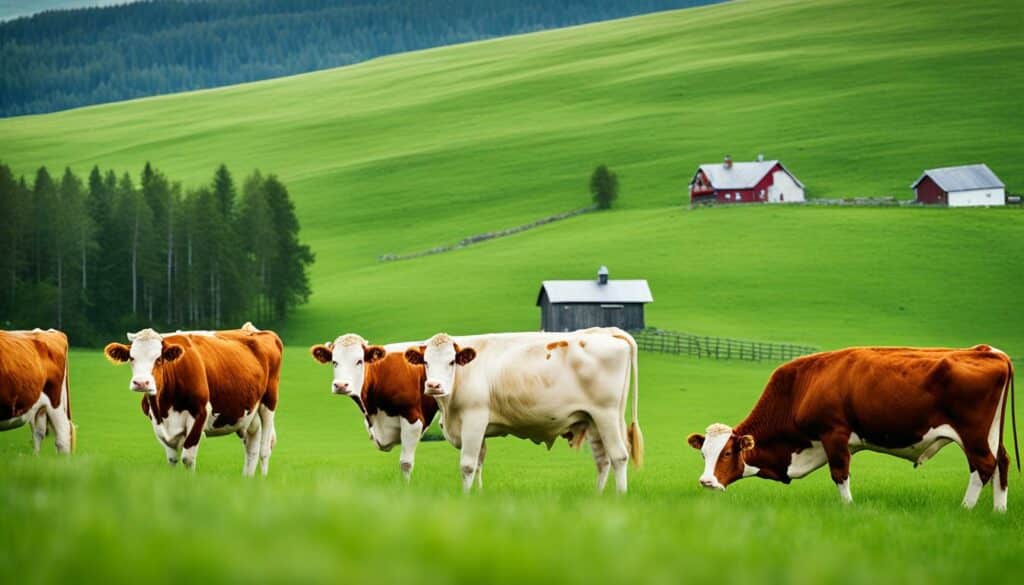
Take Högalid farm for example, with 550 cows, over half being dairy cows. This shows Sweden’s big push towards organic livestock. The aim is for 30% of Sweden’s farmland to be organic by 2030. Over 20% is already being farmed organically, showing good progress.
Companies like Yara are helping by making organic fertilizers. These fertilizers recycle nutrients, making farming more sustainable. Government support and private efforts like this are key for organic farming’s success.
Sweden puts a lot of research into organic farming. This research focuses on making crop and animal production better, along with food quality. Organizations like the Swedish Farmers’ Foundation and the Research Council play a big part. They fund research that aims to improve farming practices.
The goal is to manage pest control and nutrients better using natural methods. These practices show Sweden’s strong commitment to a more eco-friendly farming future.
The organic market in Sweden peaked in 2018 but then faced some challenges. Shifting consumer choices and political changes are making it harder for small farms. To fight this, new ways of selling products directly are growing.
By 2022, Sweden had 600,000 hectares of organic land. This shows a strong growth in organic farming. More focus on sourcing organic food directly by public places is changing the game. This change brings better environment care, food safety, and animal care.
| Metric | Statistics |
|---|---|
| Cows on Högalid farm | 550 (285 dairy cows) |
| Organic farming goal by 2030 | 30% of farmland |
| Current organic farmland | Over 20% |
| Organic farmland as of 2022 | 600,000 hectares |
Pasture-raised animals are at the heart of the organic livestock trend. They bring lots of good both for our health and Earth. Their benefits of organic livestock are clear in the healthy food they give us. Creatures like cows and hens that roam free make products with less fat but more vitamins. This is a win for everyone who eats them.
This type of farming also respects animals’ rights. Animals farmed in pastures live almost how they would naturally. This makes them healthier and happier. A big study in Europe found that farming this way helps the planet too. It cuts down on harmful farming gases, which is great news for the environment.
There are special efforts, like Code Re-farm, that focus on making dairy goats and poultry healthy and happy. New tools have been made to check on these animals better. They’re being tested in places like the Netherlands, Greece, and Switzerland. Some farmers in the UK are showing us all that farming this way works well. It’s good for the pocket and the planet.
Eating meat and dairy from these animals is super good for us. It gives us important things like omega-3 fats, CLA, and lots of vitamins. This helps us stay healthy and lowers the danger of some diseases. Plus, raising animals this way means we don’t need as many chemicals, which is better for the Earth.
A farming approach like this helps the land too. By letting animals roam free and graze naturally, the soil gets better. Places with these farms see less soil being washed away by rain. Also, the mix of plants that grow there is bigger, which is great for all kinds of creatures.
In short, pasture-raised animals are good for us and for nature. They show a better way of farming that’s kind to animals, the Earth, and our health. This way of farming is a win-win for everyone.
In Sweden’s organic livestock sector, natural animal welfare standards are key. They focus on looking after animals well and feeding them organic food. This helps them live their best life naturally. It shows a strong commitment to care and complete wellbeing.
Organic livestock farming in Sweden values kind treatment. The rules ensure animals are comfortable and have little stress. They get to act naturally. This care is critical, especially after health issues in organic poultry farms in Denmark. Denmark is working hard to fix these problems, putting a spotlight on humane conditions.
Feeding livestock organic food is crucial for their welfare. This food is of top quality, full of essential nutrients. Importantly, it’s free from GMOs, pesticides, and hormones. Such food is a core principle of organic farming. It’s good for the animals and people see it as a healthy choice.
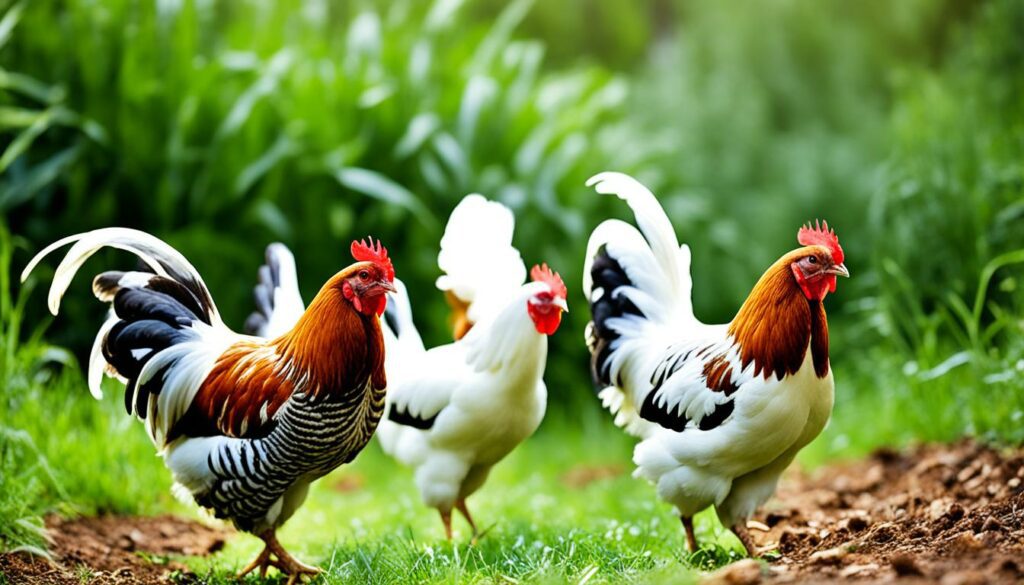
The EU has set rules on how to look after organic livestock. These include giving them space to roam and ensuring they get enough exercise. These rules are part of keeping animals healthy and preventing diseases. They highlight the significance of natural animal care in organic farming.
| Country | Organic Production Highlights |
|---|---|
| Denmark | Health problems in organic poultry; human health, environmental considerations, and animal welfare drive organic consumption |
| Sweden | Only 22 peer-reviewed studies on animal health and welfare, most being comparative |
| Norway | Better health performance in organic cows with reduced ketosis, mastitis, and milk fever |
In Sweden, eco-friendly meat production is a top priority. They use smart ways to make meat that is good for the earth, animals, and business. This shows their strong commitment to a sustainable future.
Eco-friendly methods work best for beef and lamb. These include organic ways. But, when it comes to pork, traditional methods are more efficient. They use feed better and need less space to make meat.
Yet, making meat this way, especially with beef and lamb, needs more land. This is compared to how pork is normally produced.
Choosing organic meat might cost a bit more. For example, organic beef and lamb are around $0.60 more per kilo. Organic pork costs about $1.20 extra. Also, organic processes can produce more nitrogen and greenhouse gases. So, managing these impacts is key for true sustainability.
When we look at pig breeds, Cinta Senese (CS) pigs stand out. They offer more meat after processing but less lean meat. A mix between Large White and CS pigs have more lean meat. This comparison shows the importance of balance in eco-friendly meat production.
Making meat sustainably also means caring for the animals well. Sweden is part of big projects, like PATHWAYS and Code Re-farm, with many other countries. They are creating new tools to look after animal health better. This includes gadgets for checking egg safety and finding early signs of illness in goats.
In Sweden, making meat the eco-friendly way is about more than the product. It’s about protecting the environment, looking after animals, and using new ideas. This way, they are working for a future where meat is not just good, but truly sustainable.
Högalid Farm in Skåne shows us the power of organic farming. It started using organic methods because of market needs and the farmers’ personal beliefs. This change fits Sweden’s move towards sustainable farming.
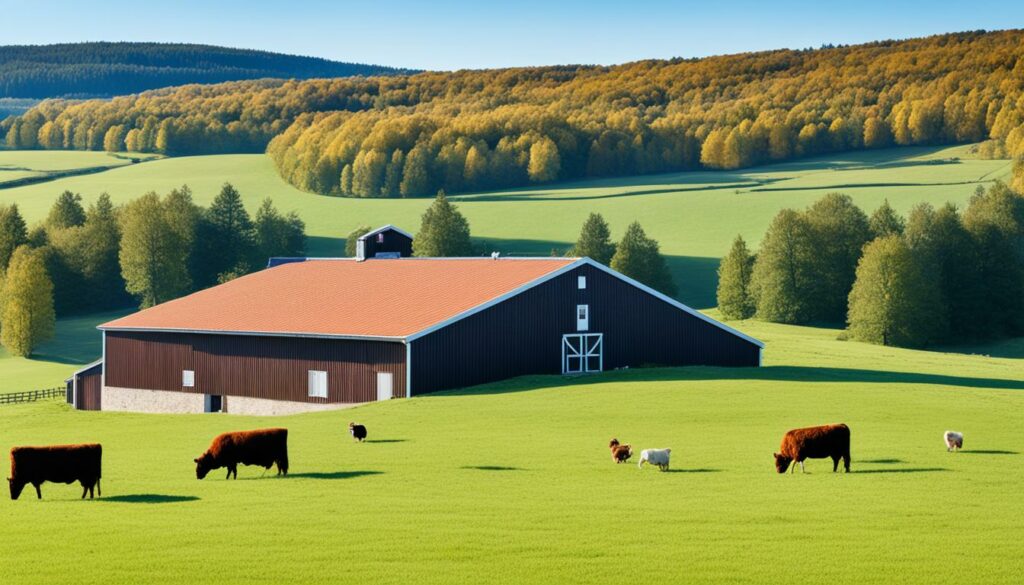
In 2011, studies looked into key aspects of dairy farming in Sweden, Denmark, and Germany. They focused on the environment, how to manage dairy cows, and using biochar in the soil. These studies show the broad effort needed for sustainable farming to succeed.
Högalid Farm is dedicated to being eco-friendly. By going organic, they’ve made a big impact in Skåne. This case study in organic farming proves that going sustainable brings many benefits.
Research highlights the improvements in soil health and the balance of the environment thanks to Högalid Farm’s methods. They use organic fertilisers, rotate crops, and manage pastures well. They also use new technologies and managing resources carefully. All these efforts show their drive to keep getting better.
Studies also look into the effects of wildlife on disease spread and how big of an issue weeds in maize fields can be. What they find helps Högalid Farm in their journey. It shows how far organic farming in Sweden can go.
Högalid Farm in Skåne is a shining example of success in sustainable agriculture. It can inspire other farms to go organic and use eco-friendly methods. Their work helps not just their farm but sets an example for farms in Sweden and around the world.
In Sweden, farmers are joining forces in new ways, sparking community benefits. They’re using land together and teaming up on projects. This collaboration boosts land-use efficiency, cuts costs, and preserves the environment.
Using someone else’s land for farming is a hit among Swedish farmers. This method lets them expand without the big cost of buying more land. It makes farming easier on the wallet and helps everyone use the land better.
Over 650 people are talking up sustainable farming in Sweden. The majority are women and folks over 30. This broad support shows the need for solid plans and policies to push sustainable farming forward.
Working together in regions is key to successful farming in Sweden. It helps farmers tackle the many challenges they face. This partnership makes sharing knowledge and funds easier, benefitting all.
The Swedish government is joining global efforts to make the food system better. They’re working with others on school meals and healthy, green diets. Together, they’re planning actions to make farming more sustainable by 2024.
Organic farming isn’t just about the crops; it’s also about the communities. It brings people closer and gives them a common focus. Thanks to this, they find unique ways to farm that suit their area and needs best.
In the EU, studies show teaming up for farming really works. But, it’s not always easy. Challenges like who’s in charge can get in the way. The key is to build strong teams and trust among everyone involved.
In Sweden, working together for better farming is making a real difference. By coming together, farmers and their communities are building a better future. Together, they’re making farming better for everyone, not just a few.
Organic livestock farming is changing a lot, thanks to new technology and farming methods. Farmers in places like Germany, Italy, Sweden, and the UK are moving towards grass-fed cows. This switch is good for the quality of what they produce and for the planet.
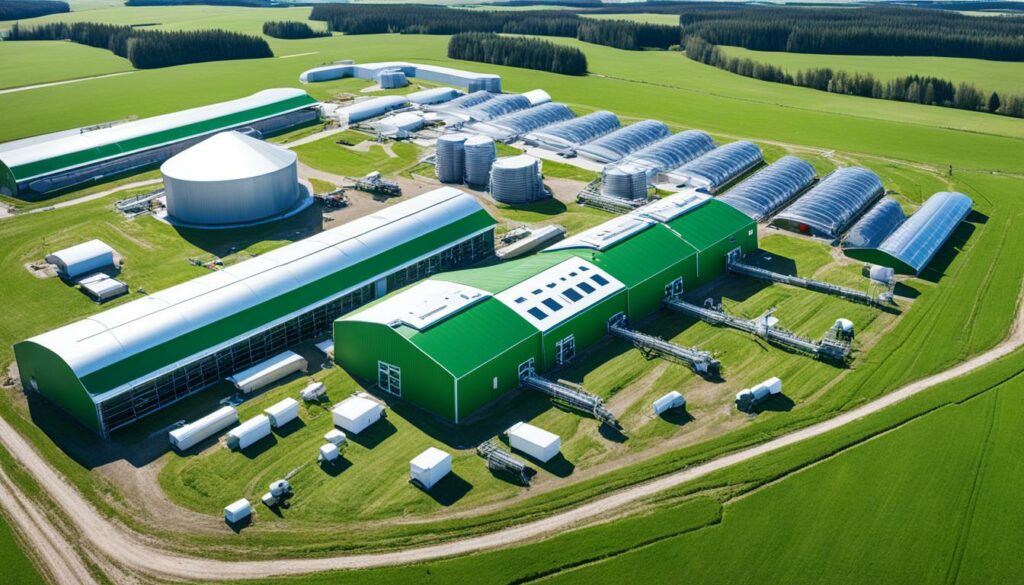
The PATHWAYS project, funded by the EU, is a big deal across Europe. It includes countries like Denmark and Belgium. This project aims to change how farming is done to cut down on harmful emissions. Livestock, like cows, produce a lot of these emissions, especially methane. This gas is a big problem for climate change.
New farming technology is helping organic farmers do better. The Code Re-farm project, for instance, is working on new ways to keep dairy goats and poultry healthy. By October 2024, they’ll have nine new tools to make sure the food we get is safe and good. This is making organic farming more efficient and the food of better quality.
Precision farming is all about using resources wisely and managing farms better. It lets farmers give the exact amount of water, nutrients, and other things their plants or animals need. This reduces waste and makes farms more effective.
In Sweden, for instance, farmers are part of projects that aim to improve farming in many ways. These projects look at keeping plants and animals healthy, using nutrients better, and growing better crops for animal feed. They boost how much is produced without harming the environment.
There are efforts to make organic farming even better with local protein feeds for some animals and smart ways to control weeds. These steps mix the best of old and new in farming. This approach offers a way for farming to be sustainable in the long run.
Sweden’s government strongly backs organic farming. It’s a key reason why over 20% of the country’s farmland is now used for organic crops. The goal is to reach 30% by the year 2030. These policies give farmers both money benefits and encourage eco-friendly farming.
By 2030, Sweden wants 60% of the food in places like hospitals and schools to be organic. This push helps organic farmers by making the market more stable. It reduces the scare of changing to organic farming and helps make sustainable farming easier.
The EU’s work with organic farming is also worth noting. In 2018, they supported 8.8 million hectares of organic land. This cost them over 1.8 billion euros. Such efforts show about 3% of the European budget for farming went to help organic farmers.
Also, between 2014 and 2020, almost half of the EU’s spending on environmentally-friendly farming went to organic efforts. Nations like Denmark, Greece, and Croatia are taking big steps to support organic farming. But, others like the UK, Ireland, Malta, and the Netherlands are not doing as much. These differences show the EU’s mixed approach to helping with organic farming.
Sweden’s organic farmers also help each other out. For instance, a 400-hectare farm in Skåne works with 550 cows, 285 of which are dairy cows. They use practices that are good for the soil and the environment. Crop rotation helps keep the soil healthy. Companies like Yara help by making fertilisers from recycled nutrients. This helps the soil and the crops it grows to be strong.
Organic farming in Sweden is looking up, thanks to high market demands and help from the government. Sustainable farming methods are getting more popular, especially in livestock. This approach benefits animals, the soil, and our planet.
Europe has a big part of its population living in rural and semi-rural areas. This means organic farming can have a large positive effect. Livestock farming takes up a lot of the world’s farmland, affecting resources and the environment. Going organic is not just good for local jobs. It also helps our planet.
Yet, changing to organic farming can be tough for farmers, leading to less money and more expenses at first. But, with continued government support and more people wanting to see animals well cared for, these challenges can be overcome. Choosing organic helps protect our environment and the future.
In Sweden, organic livestock farming is all about being nature-friendly. It focuses on green ways to take care of animals. The goal is to make good food without harming the earth.
Organic farming in Sweden is growing fast. This change is driven by the market and a desire for greener ways. Farmers are moving towards methods that are kind to the planet and animals.
Sweden’s leaders want to see big changes. They aim to have 30% of farm areas organic by 2030. They also want more organic food in public places. To reach these goals, they are helping farmers go green and treat animals better.
Organic farming brings many good things. Animals are looked after well. This helps the soil too. Using fewer chemicals makes the environment better. All this keeps everything in natural balance.
Farming organically is not easy. It costs more up front and to keep going. It’s hard to stand out against standard farming. But, it’s important to find a balance that’s good for the land and the farm.
Sweden’s organic farms take care of the soil by using it wisely. They let animals graze in different fields. They mix the plants and animals in smart ways. This keeps the land healthy.
Looking after animals right is key. They live and eat in ways that are natural for them. This makes sure they are healthy and happy.
Rotating crops helps the soil stay strong. It fights off bad plants and uses nutrients well. This keeps the land ready for growing healthy food.
Organic farms are good for the soil. They stop it from getting worn down. This means it will keep being a great place to grow food.
Animals that roam freely are healthier and happier. Their food is better too, which makes the meat and dairy you eat better. This way of farming is also good for the earth.
Swedish farms care for animals like they would in nature. They give the right food for health and happiness. This is part of making sure animals are treated well.
Green meat farming in Sweden uses methods that are both good for the earth and the animals. These ways aim to care for nature and still make good food.
Högalid Farm shows how farming can be good for the earth. It changed to organic ways because it’s the right thing to do. This change is leading to a better way to farm for everyone.
Farmers work together in smart ways in Sweden. They share land and help each other out. This makes farming better for the land and their business.
New tools are helping farmers work in ways that are smarter. They use less but get more. This way, farming is not just greener, it’s also more successful.
The Swedish government wants farming to be more natural. They set goals and help farmers meet them. This makes farming better for the planet and for us.